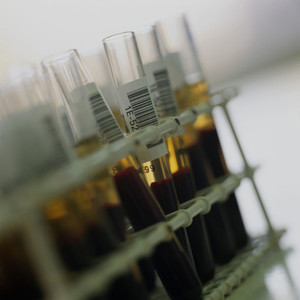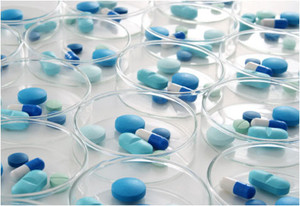EMA announced on 15 June 2012 that it had finalised two guidance documents describing how pharmaceutical companies should develop biosimilar monoclonal antibodies. The guidelines set out how developers should conduct extensive side-by-side analysis of the test and reference products in order to determine similarities and potential differences between the biosimilar and reference biological.
EMA finalises biosimilar monoclonal antibody guidelines
Home/Guidelines
|
Posted 22/06/2012
 0
Post your comment
0
Post your comment

The first guideline covers clinical and non-clinical aspects of biosimilar monoclonal antibodies.
Guideline on similar biological medicinal products containing monoclonal antibodies – non-clinical and clinical issues
Effective date: 1 December 2012
http://www.ema.europa.eu/docs/en_GB/document_library/Scientific_guideline/2012/06/WC500128686.pdf
The guidance contains answers to questions frequently asked by companies with an interest in developing biosimilar monoclonal antibodies. It lays out a stepwise approach for the development programme, covering testing these medicines in in-vitro studies and in animal studies, if needed, as well as testing in human subjects, from pharmacokinetic and pharmacodynamic studies through to testing of efficacy and safety. It also sets out requirements for pharmacovigilance, the safety monitoring of medicines once they have been authorised.
The focus of the guidance is on the careful demonstration of the comparability of a biosimilar monoclonal antibody with the monoclonal antibody in the original, authorised medicine. This is needed to make sure that the efficacy and safety demonstrated for the original medicine are conserved in the biosimilar medicine, and notes that ‘deviations from disease-specific guidelines issued by the CHMP may be warranted. Sponsors should detect the ‘most sensitive dose … to detect potential differences in pharmacokinetics between the biosimilar and the reference products.’
For monoclonal antibodies licensed in several clinical indications, it is not generally required to investigate the pharmacokinetic profile in all of them. However, if distinct therapeutic areas are involved for one particular monoclonal antibody, e.g. autoimmunity and oncology, separate pharmacokinetics studies may be needed if different target-mediated clearance exists for different therapeutic areas.
The second guideline covers immunogenicity assessment of monoclonal antibodies intended for in-vivo clinical use addresses issues related to the body’s development of antibodies against these medicines, which could lead to reductions in their effectiveness or rare, serious side-effects, such as pure red cell aplasia [1].
Guideline on immunogenicity assessment of monoclonal antibodies intended for in vivo clinical use
Effective date: 1 December 2012
http://www.ema.europa.eu/docs/en_GB/document_library/Scientific_guideline/2012/06/WC500128688.pdf
Monoclonal antibodies are antibodies that are produced from a single clone of cells and that recognise and attach to a specific target in the body. They are used in some anticancer medicines and in medicines against diseases affecting the immune system, such as rheumatoid arthritis.
This guideline addresses the issues that can occur at various stages of screening and confirmatory assays in assessing immunogenicity of monoclonal antibodies, for instance, assays for antibody detection, antibody assessment response testing and controls.
The guideline advises the sponsors to identify and manage the risk present within their products through analysis and understanding of: prior knowledge (e.g. mAb trough concentration); monoclonal antibody structure (e.g. glycosylation patterns); mechanism of actions (e.g. cytolytic, apoptotic); clinical factors (e.g. for antibodies used in treatment of juvenile arthritis compared to rheumatoid arthritis at comparable doses).
Sponsors should ‘understand the rate of occurrence and the clinical consequences of an unwanted immune response, and if these consequences can be prevented, appropriately measured, and/or treated medically.’ EMA recommends sponsors should consider a risk-based approach for the risk management plan.
Last note
EMA finalised these guidance documents after consideration of comments received during public consultation periods, which ran from November 2010 to May 2011. The final versions were adopted by the agency’s Committee for Medicinal Products for Human Use (CHMP) in May 2012.
Both guidelines come into effect on 1 December 2012.
As part of the consultation process, EMA also organised a workshop in October 2011, where representatives of regulators, academia, learned societies and the pharmaceutical industry discussed the content of the draft guidelines. The report from the workshop, together with the slides presented, have also been published on the EMA website and are available at http://www.ema.europa.eu/ema/index.jsp?curl=pages/news_and_events/events/2011/10/event_detail_000538.jsp&mid=WC0b01ac058004d5c3.
Related article
Reference
1. GaBI Online - Generics and Biosimilars Initiative. Epoetin alfa and pure red cell aplasia [www.gabionline.net]. Mol, Belgium: Pro Pharma Communications International; [cited 2012 Jun 22]. Available from: www.gabionline.net/Biosimilars/Research/Epoetin-alfa-and-pure-red-cell-aplasia
Source: EMA
Policies & Legislation
ANVISA tackles 24-month backlog in biologicals post-registration petitions
US EO: delivering Most-Favored-Nation Prescription Drug Pricing to American patients
Most viewed articles
The best selling biotechnology drugs of 2008: the next biosimilars targets
Global biosimilars guideline development – EGA’s perspective
New guidance for biologicals in Pakistan and Hong Kong’s independent drug regulatory authority

Home/Guidelines Posted 20/10/2025
Canada poised to remove requirement for Phase III trials for biosimilars

Home/Guidelines Posted 22/07/2025
The best selling biotechnology drugs of 2008: the next biosimilars targets








Post your comment